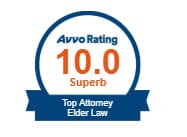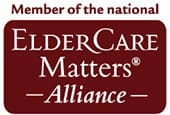
Many clients seek the advice of an elder law attorney regarding long-term care planning or Medicaid eligibility in the event that a loved one requires nursing home care. When speaking to a client and reviewing a potential Medicaid applicant's financial history, it often comes to light that the individual transferred assets to a family member in the past.
Medicaid imposes a five year look back period on any transfers of assets. (The complete five years will be totally phased in as of March, 2011.) Such transfers will be questioned as part of the Medicaid application process. Pursuant to applicable regulations, all transfers are presumed to be for the purpose of qualifying for Medicaid unless proven otherwise. The burden of proof lies with the applicant. In other words, a Medicaid applicant who made gifts within the look back must prove to the Medicaid agency that the gifts were for a purpose other than to qualify for Medicaid to overcome this presumption. If the presumption is overcome, then the gift(s) will be deemed exempt and will not create a Medicaid penalty period.
We have had several cases in which a Medicaid applicant transferred assets and we presented satisfactory evidence on the client's behalf to show that transfers were made exclusively for a purpose other than to qualify for Medicaid. Some examples include estate planning that involves life insurance where a spouse gifted assets to his daughter to pay for life insurance premiums; a woman, who was 59 years old and healthy, gave money to her daughter to purchase a home in South Carolina in which she and her daughter were going to live but she had a stroke shortly thereafter and required nursing home care; and a client who had been making annual exclusion gifts to her children of $10,000 per year since 2001.
When assessing whether it is possible to present satisfactory evidence, one should consider factors such as the physical/mental health of the applicant at the time of the transfer; previous pattern of gifting; financial situation at the time of transfer (in other words, transfers would not render the individual insolvent because sufficient assets remained in his/her name); and the age and expectation of requiring care in the relatively near future.
The subject was recently addressed in Matter of Loiacono v. De- Marzo, a recent New York Appellate decision. Margie Loiacono transferred assets to her son during the look back period. The Suffolk County Department of Social Services assessed a 24 month penalty period and her son appealed, asserting that the transfer was made for purposes other than to qualify for Medicaid. DOH upheld the decision and the son brought an article 78 proceeding to appeal.
The Court stated, "the petitioner bears the burden of demonstrating eligibility." The Court found that "contrary to the Petitioners' contentions, substantial evidence supports the DOH's determination that the Petitioners failed to make a satisfactory showing that the assets were transferred exclusively for a purpose other than to qualify for medical assistance... Given the evidence of the age and medical condition of Margie Loiacono at the time the transfers were made to her son, and the petitioners' failure to proffer sufficient evidence demonstrating that the transfers were made exclusively for reasons other than to qualify for medical assistance, the petitioners failed to rebut the presumption that the transfers were motivated by anticipation of a future need to qualify for medical assistance..."
The case exemplifies why it is important to consult with an experienced elder law advisor to discuss Medicaid planning options, as facts and circumstances differ from case to case.






No Comments
Leave a comment